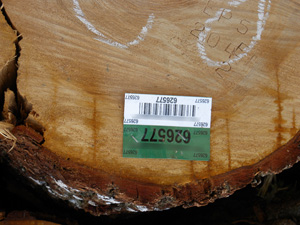 As a result of Canada’s comprehensive legislative and regulatory framework, and the effective enforcement of it by regular scrutiny and audits of forest companies, and based on the EUTR definitions of both ‘illegally harvested’ and ‘legally harvested’, the risk of illegal logging in Canada can be identified as negligible.
As a result of Canada’s comprehensive legislative and regulatory framework, and the effective enforcement of it by regular scrutiny and audits of forest companies, and based on the EUTR definitions of both ‘illegally harvested’ and ‘legally harvested’, the risk of illegal logging in Canada can be identified as negligible.
Based on the preceding paragraph, together with the third-party evidence identified under Country of Harvest – corroboration of low risk for the purposes of your due diligence obligations as an operator under the EUTR, when assessing the risk of ‘illegally harvested’, wood harvested from forests in all Canada’s Provinces can be identified as constituting ‘negligible risk’.
As ‘risk of illegal logging’ does not vary between different regions and concessions of harvest in Canada, there is no obligation on operators to obtain information on harvest location beyond country of harvest.
As per Article 6 1.(c) of the EUTR; where the risk identified constitutes negligible risk, operators are not required to develop ‘risk mitigation procedures’ (this extending to ‘additional information or documents and/or requiring third party verification’) as part of their due diligence system, regardless of complexity of supply chain.
There will be the occasional shipment when the product being shipped from Canada contains wood originating in both Canada and the USA. In certain Border locations between Canada and the USA forest harvest on the USA side is (as may also be the case between some EU Member States) geographically tributary to Canadian manufacturing operations. USA harvests are regulated by State and Federal Forest Service legislative supervision frameworks that are very similar to those in Canada and are also ranked as negligible risk. The Border crossing requirements for the movement of product between the two countries is very tightly monitored and controlled. The Canadian exporter will be required to provide details pertinent to the EU operator’s due diligence system for such blended-source products.
In the case of exports from Canada to the EU which include wood obtained from an offshore location, the exporter will need to provide, in addition to product information, details*of species, country of harvest and where the operator may access information in order to comply with their due diligence obligations and assessment of negligible risk. If information is not available to enable identification of negligible risk the operator will not accept the product. (*Applies both to the exporters own products and to any from a supplying manufacturer, e.g. wood flooring, made with non-Canadian species, included in a timber-frame kit).
The Evidence – Canadian forest legislation
In recognition of the obligations incumbent on a nation which is steward to one of the largest areas of forest in the world, Canadian forest practices are governed by laws and regulations developed at both Federal and Provincial level. Should you require access to any of the legislative and regulatory documentation it is available via the Canadian Council of Forest Ministers web pages Sustainable Forest Management in Canada.

